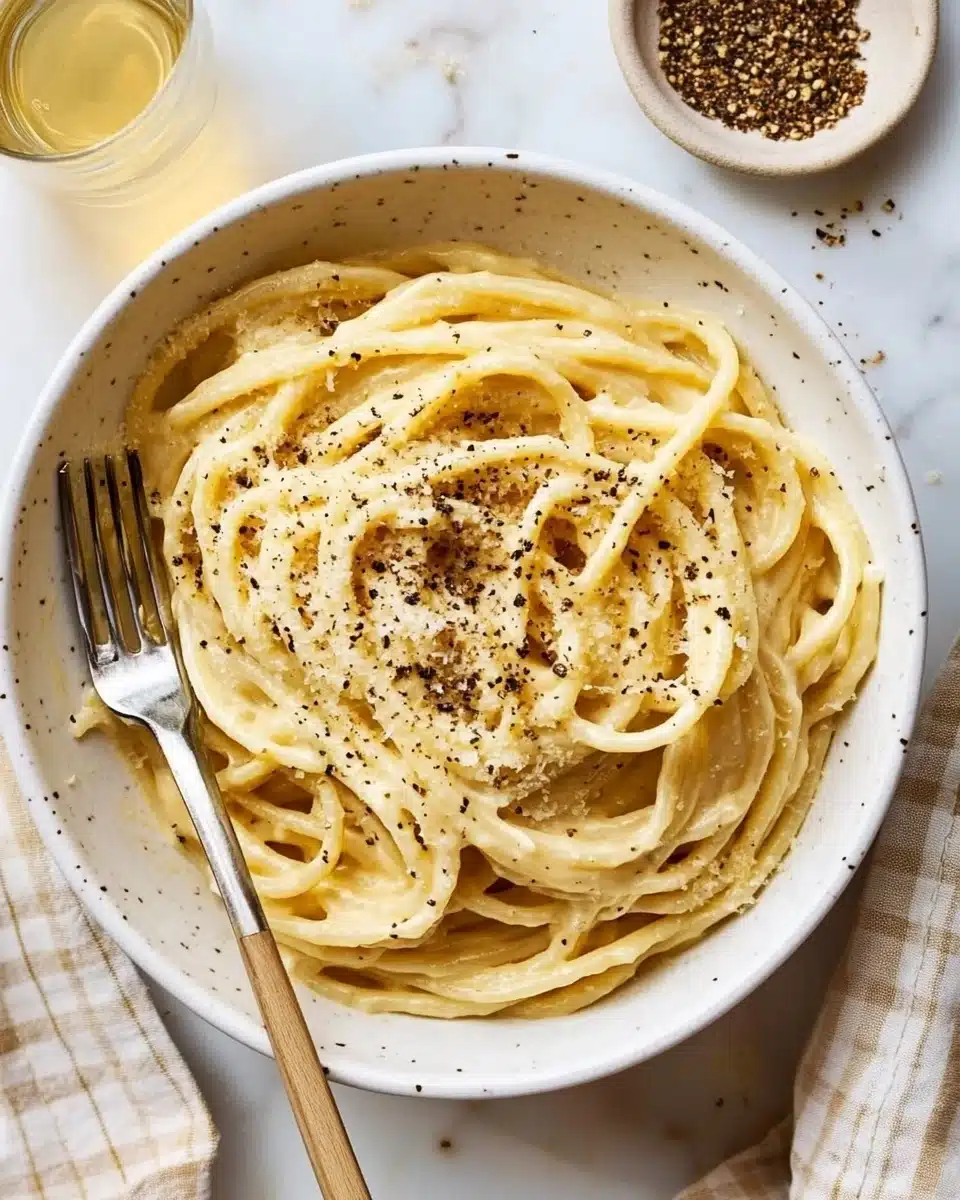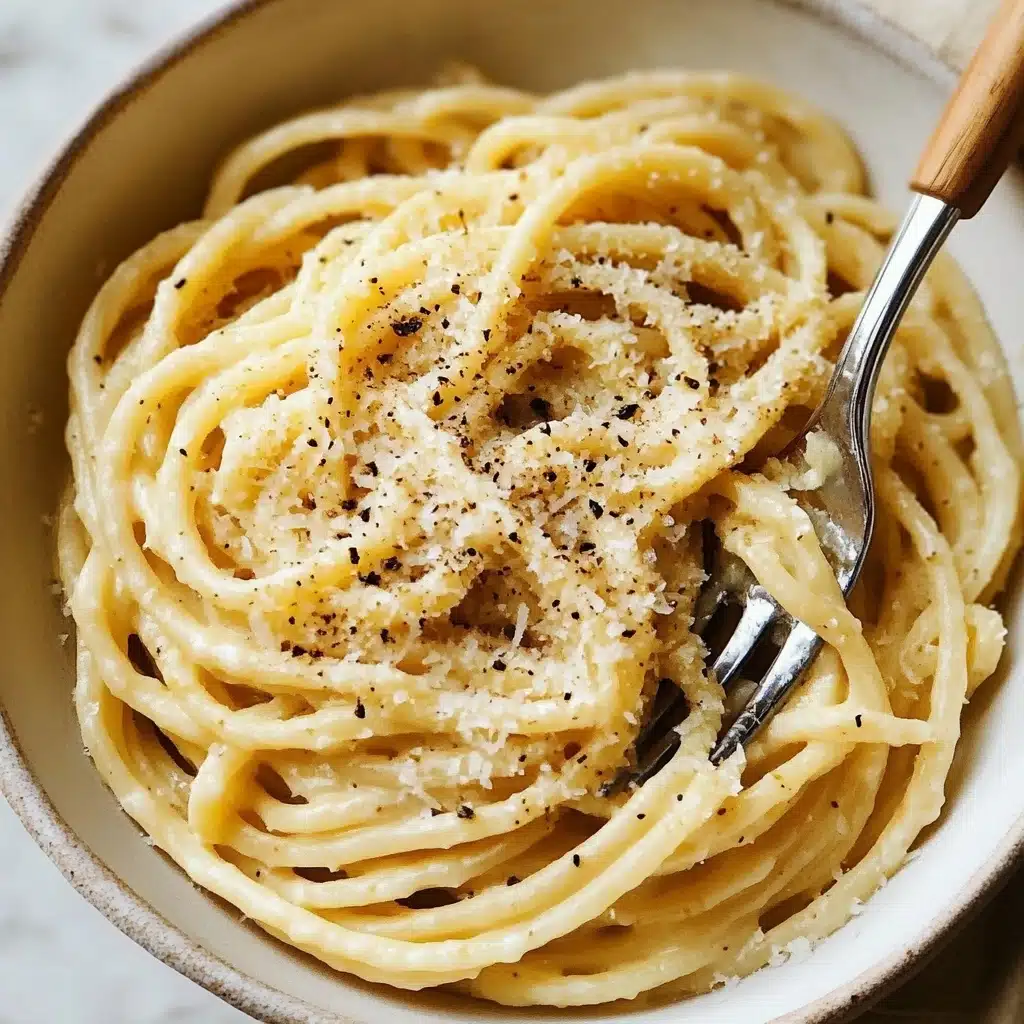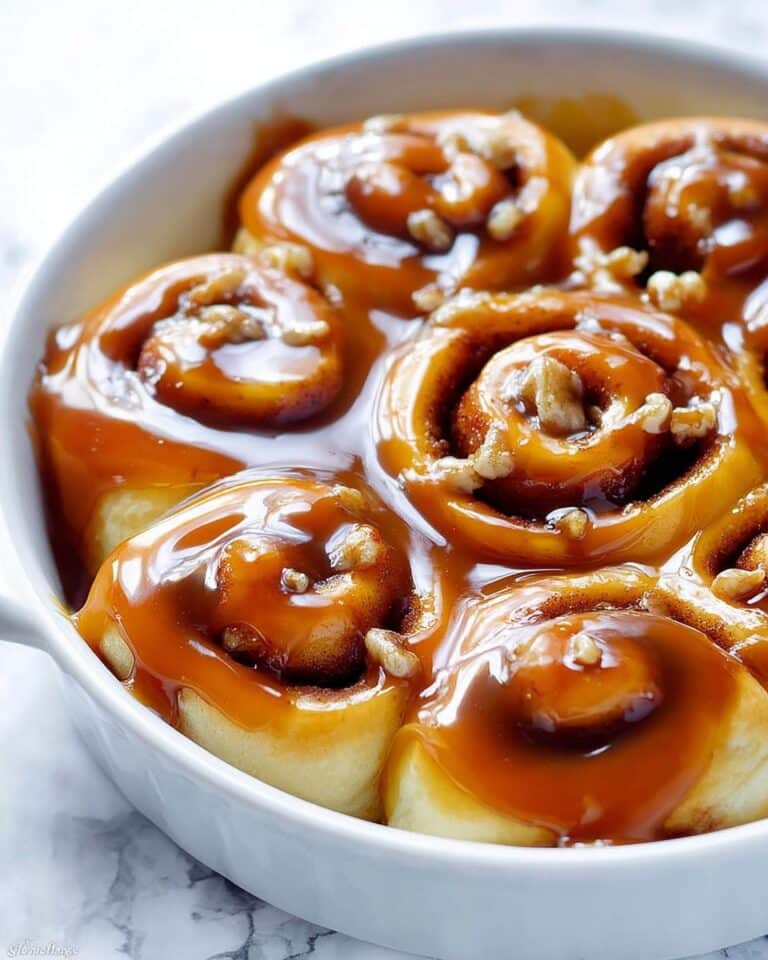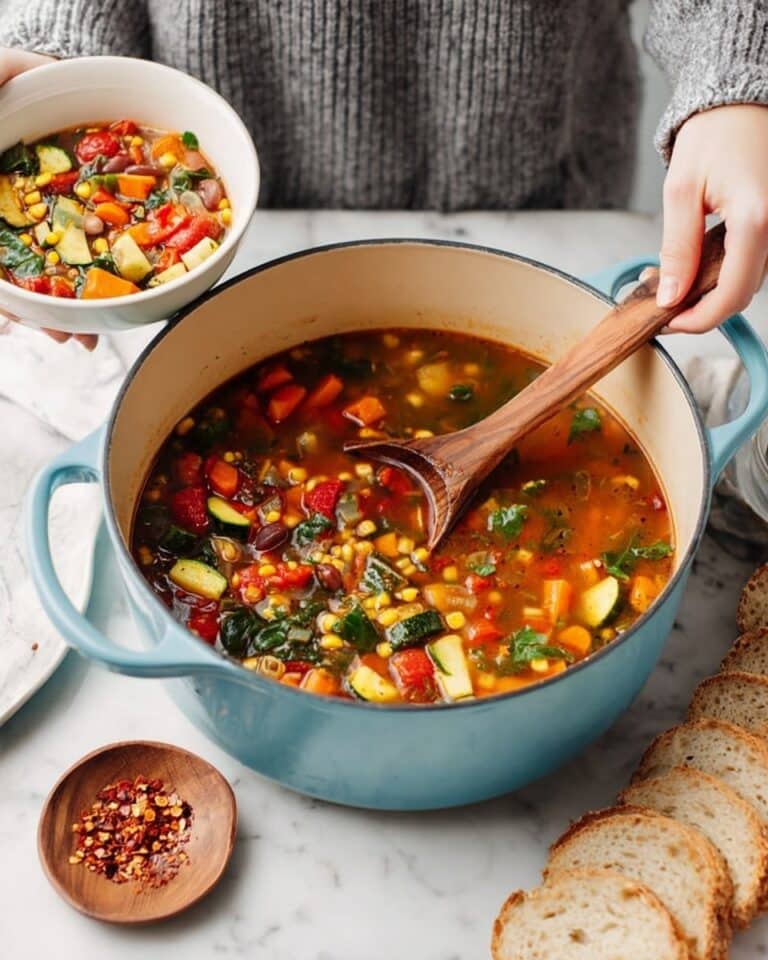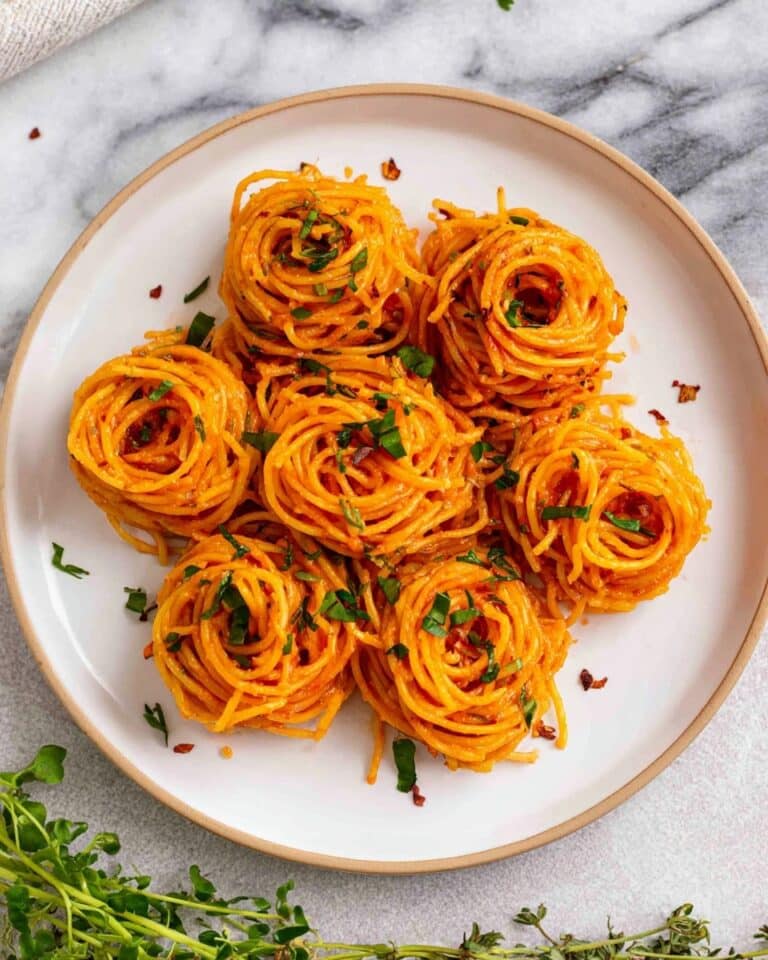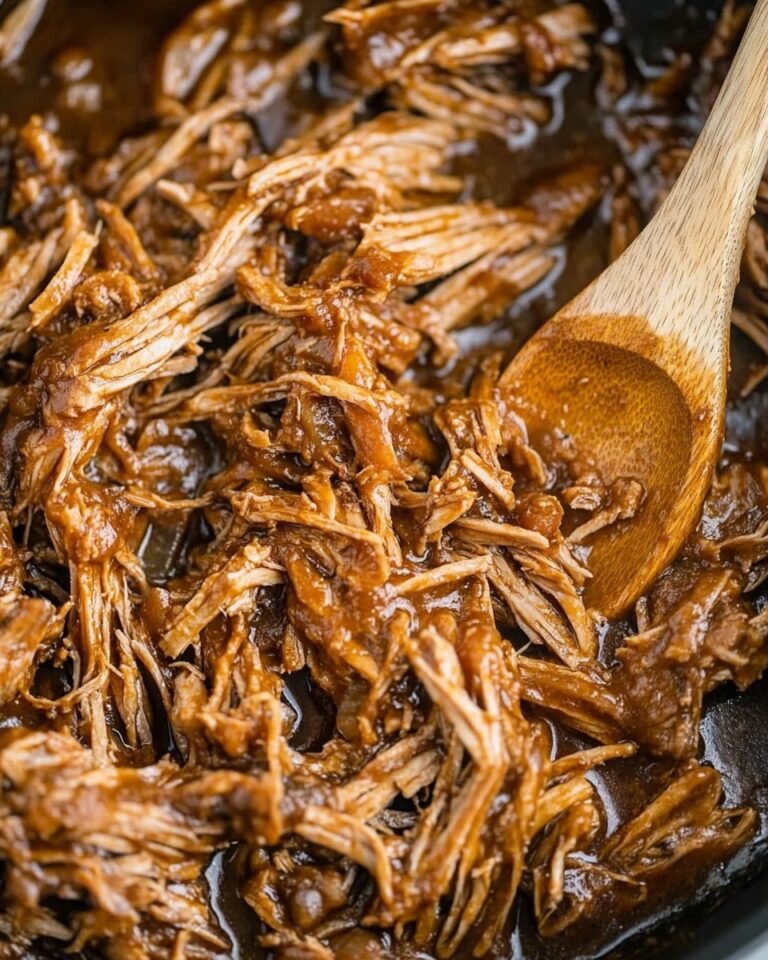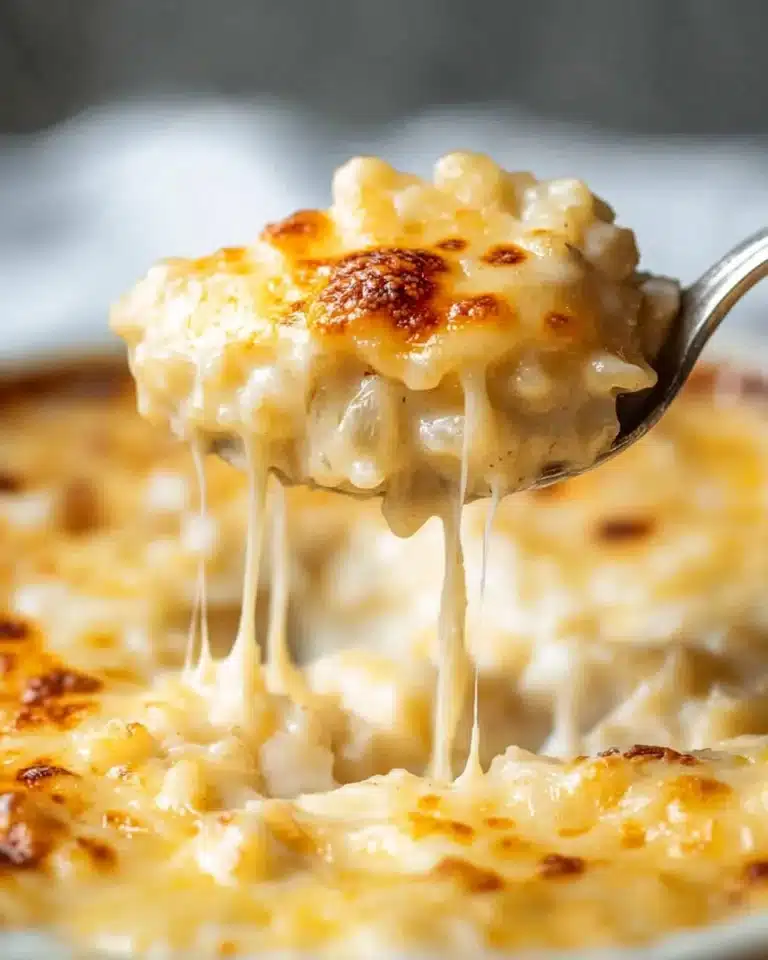When it comes to pure comfort food that’s impressively simple yet stunningly delicious, Cacio e Pepe is queen. Imagine slurpy bucatini tangled in a glossy, cheesy sauce, with pepper’s distinctive perfume in every bite — it’s pasta in its most joyfully uncomplicated form!
Why You’ll Love This Recipe
- Bold, Timeless Flavors: The simple trio of cheese, butter, and pepper creates an incredibly rich sauce that’s creamy, peppery, and utterly crave-worthy.
- Ready in 20 Minutes: A restaurant-level pasta that legitimately comes together from pantry to plate in under half an hour — perfect for fast weeknight dinners or impromptu gatherings.
- No Fancy Ingredients: All you need is a handful of humble staples, so you can enjoy authentic Italian comfort food anytime the craving strikes.
- Totally Satisfying: The glossy, cheesy sauce clings to every strand of bucatini, delivering pure pasta bliss with each forkful.
Ingredients You’ll Need
The beauty of Cacio e Pepe lies in its humble, straightforward ingredients—each one absolutely essential for building the classic flavor and creamy, luxurious texture. With just a few pantry staples, you’re on your way to pasta perfection!
- Bucatini Pasta (8 ounces): This thick, spaghetti-like noodle with a hole in the center is perfect for capturing all that peppery, cheesy sauce. Feel free to substitute with classic spaghetti if it’s what you have on hand.
- Unsalted Butter (2 tablespoons): Adds richness and helps build a silky base for the sauce without overpowering the sharpness of Pecorino Romano.
- Freshly Ground Coarse Black Pepper (1 teaspoon, plus more for serving): Bold, fragrant, and ever-so-slightly spicy—freshly cracked black pepper is non-negotiable for the signature bite in Cacio e Pepe.
- Pecorino Romano Cheese (2 ounces finely grated, plus more for serving): Salty and robust, this aged sheep’s milk cheese is the soul of the dish. Grate it very finely so it melts beautifully into the sauce.
Variations
Think of Cacio e Pepe as your culinary blank canvas! Here are a few tried-and-true spins to suit your taste, work with what’s in your pantry, or accommodate different dietary preferences. Don’t be afraid to make it your own!
- Gluten-Free Version: Use your favorite sturdy gluten-free pasta. Just be sure to check doneness carefully, as gluten-free noodles can cook a little faster or softer than wheat-based versions.
- Add a Twist of Citrus: For a subtle, fresh accent, grate in a touch of lemon zest just before serving. It brightens the sauce without interfering with its richness.
- Go Extra Creamy: A splash of heavy cream or a dollop of mascarpone folded in with the cheese takes the sauce to next-level silkiness (though purists might not approve!).
- Change Up the Pasta Shape: While bucatini or spaghetti are traditional, feel free to use rigatoni, fusilli, or any pasta with nooks and crannies for catching the sauce.
How to Make Cacio e Pepe
Step 1: Cook the Pasta
Bring a large pot of generously salted water to a rolling boil, then add your bucatini. Cook it, stirring occasionally, until tender but still pleasingly firm to the bite—al dente is the way to go! Most importantly, save about a cup of that starchy pasta water before draining; it’s liquid gold for the sauce.
Step 2: Bloom the Pepper and Butter
While your pasta cooks, place a big nonstick skillet over medium heat. Add your unsalted butter and the full teaspoon of freshly cracked black pepper, allowing the butter to melt gently as the pepper sizzles and releases its aromatic, spicy oils—just about 30 seconds is all you need before removing the pan from the heat.
Step 3: Toss the Pasta with Cheese and Pasta Water
As soon as the pasta is perfectly al dente, use tongs to transfer it right into the buttery pepper mixture—no need to drain completely! Add about 1/3 cup hot pasta water and give everything a quick toss to combine. Next, sprinkle in half the grated Pecorino Romano, tossing as it begins to melt and cling to the noodles.
Step 4: Finish with More Cheese and Adjust
Now, add the rest of the cheese and keep tossing to create that irresistible, glossy sauce. If you notice things getting thick or sticky, don’t panic—just splash in more reserved pasta water, a tablespoon at a time, until the sauce becomes beautifully creamy and coats each strand.
Step 5: Serve Immediately
The magic of Cacio e Pepe is all about luscious texture, so serve straight away, showered with extra Pecorino Romano and another crack of black pepper. Gather everyone around the table—this is one pasta you really want to eat piping hot!
Pro Tips for Making Cacio e Pepe
- The Cheese Grating Secret: Use a microplane or the finest side of your grater to make Pecorino Romano airy and fluffy—this helps it melt fast and prevent clumps in your sauce.
- Freshly Cracked Pepper, Always: Pre-ground pepper just doesn’t cut it here. Grind your own to ensure big, bold flavor and those signature flecks.
- Don’t Drain the Pasta: Always transfer pasta directly from the pot to the skillet with tongs. The residual water sticking to the noodles is key for emulsifying the sauce.
- Sauce Consistency Rescue: If your Cacio e Pepe starts to look too thick or stringy, just add a splash of hot pasta water and toss—it’ll turn creamy and luscious again in seconds.
How to Serve Cacio e Pepe
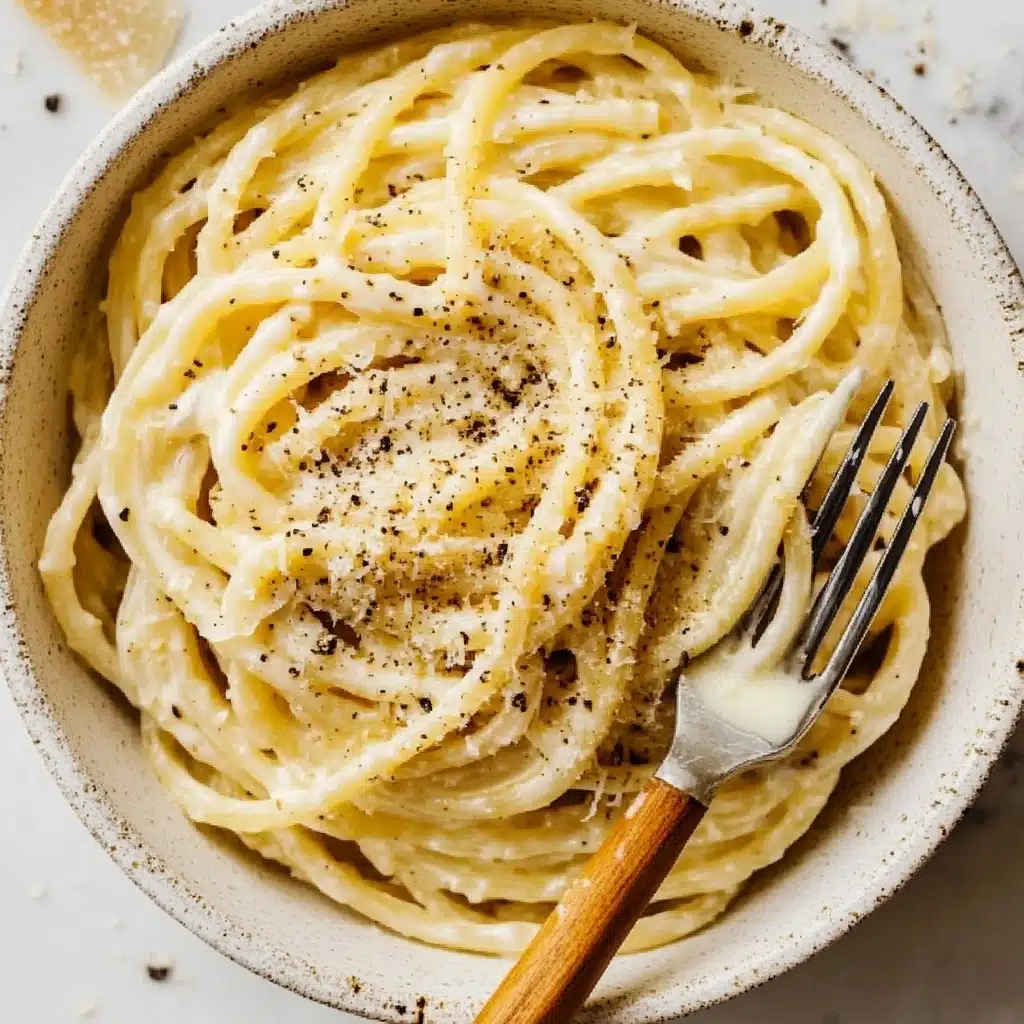
Garnishes
For classic Cacio e Pepe, a final shower of finely grated Pecorino Romano and a few robust cracks of black pepper are all you need. If you want a little color, a sprinkle of chopped fresh parsley or lemon zest adds a bright, modern touch while keeping the focus on the cheese.
Side Dishes
This dish shines as a star on its own, but it’s amazing alongside a simple green salad with a lemony vinaigrette or roasted spring vegetables. Warm, crusty bread is perfect for scooping up any leftover sauce (and trust me, you’ll want to!).
Creative Ways to Present
Try twirling Cacio e Pepe into neat pasta nests for an elegant dinner-party presentation, or serve in shallow bowls and finish tableside with a blizzard of cheese for drama. Individual ramekins make for a fun, cozy touch at casual gatherings, too!
Make Ahead and Storage
Storing Leftovers
If you find yourself with leftover Cacio e Pepe, let it cool completely, transfer to an airtight container, and refrigerate. The flavors get even deeper overnight, although the sauce will thicken as it chills.
Freezing
This is one pasta that’s best enjoyed fresh! Freezing can cause the cheese sauce to separate or become grainy once thawed. If needed, freeze for up to one month, but expect some change in texture upon reheating.
Reheating
To revive leftover Cacio e Pepe, add a splash of water or milk and gently reheat on the stovetop over low, stirring constantly. This helps loosen the sauce and restores that dreamy, creamy consistency—just take care not to overcook!
FAQs
-
Can I use Parmesan instead of Pecorino Romano in Cacio e Pepe?
While Parmesan can work in a pinch, classic Cacio e Pepe gets its signature flavor from Pecorino Romano. Pecorino is saltier and tangier than Parmesan, creating a much bolder, more authentic sauce. If you must substitute, use a high-quality Parmigiano-Reggiano and taste for salt adjustments.
-
Why did my cheese clump or become stringy?
This usually happens if the cheese isn’t grated finely enough, the pasta or water are too hot, or there’s not enough pasta water for emulsifying. Finely grate your Pecorino, use hot (but not boiling) pasta water, and toss vigorously to help the cheese melt smoothly.
-
Is it possible to make Cacio e Pepe vegetarian?
Most Pecorino Romano is made with animal rennet, but vegetarian versions do exist. Look for a cheese labeled “vegetarian” or swap in a vegetarian-friendly hard cheese. The instructions otherwise remain the same!
-
Can I double the recipe for a crowd?
Absolutely! Just be sure to use a very large skillet to ensure every strand gets well-coated in that glorious sauce, and add your cheese in batches to prevent clumping. Work quickly for the creamiest results.
Final Thoughts
I truly hope you treat yourself to a bowl of this classic Cacio e Pepe soon—it’s proof that sometimes the simplest recipes are the most satisfying. Whether you’re cooking for yourself or sharing with loved ones, this pasta delivers comfort and joy in every cheesy, pepper-flecked bite!
Print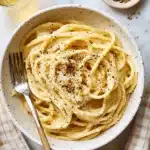
Cacio e Pepe Recipe
- Prep Time: 5 minutes
- Cook Time: 15 minutes
- Total Time: 20 minutes
- Yield: Serves 3 to 4
- Category: Stovetop
- Method: Stovetop
- Cuisine: Italian
- Diet: Vegetarian
Description
A classic Roman pasta dish, Cacio e Pepe is a simple yet decadent recipe featuring bucatini pasta coated in a creamy, cheesy sauce with a kick of black pepper.
Ingredients
Pasta:
- 8 ounces bucatini pasta
Sauce:
- 2 tablespoons unsalted butter
- 1 teaspoon freshly ground coarse black pepper, plus more for serving
- 2 ounces finely grated Pecorino Romano cheese, about 1 cup, plus more for serving
Instructions
- Prepare the pasta: Bring a large pot of salted water to a boil. Cook the pasta until al dente.
- Make the sauce: Melt butter in a skillet over medium heat. Add pepper. Remove from heat.
- Combine: Transfer cooked pasta to the skillet. Add pasta water and half of the cheese. Toss until creamy. Add remaining cheese.
- Serve: Top with more pepper and cheese. Serve hot.
Nutrition
- Serving Size: 1 serving
- Calories: 400
- Sugar: 1g
- Sodium: 450mg
- Fat: 15g
- Saturated Fat: 9g
- Unsaturated Fat: 5g
- Trans Fat: 0g
- Carbohydrates: 50g
- Fiber: 2g
- Protein: 15g
- Cholesterol: 40mg

